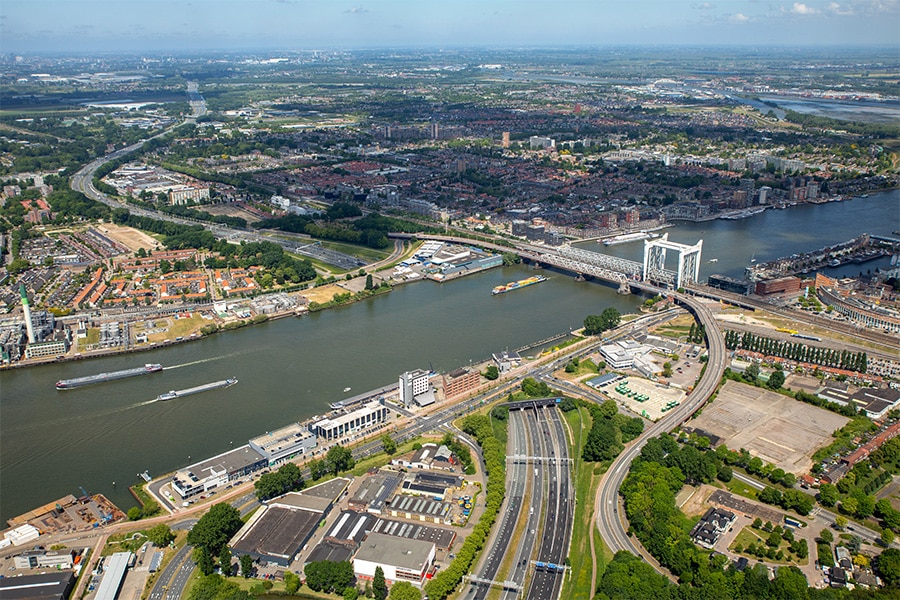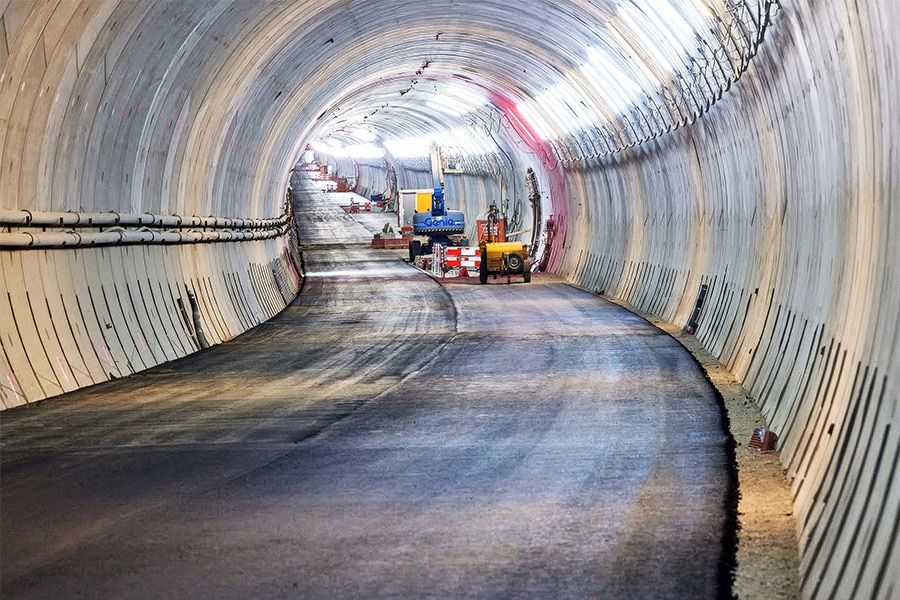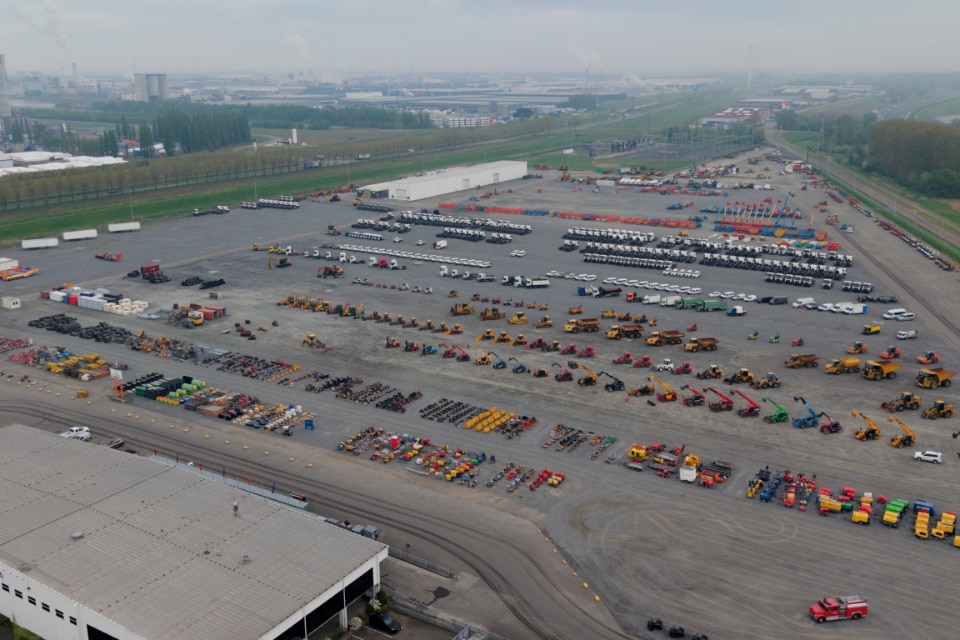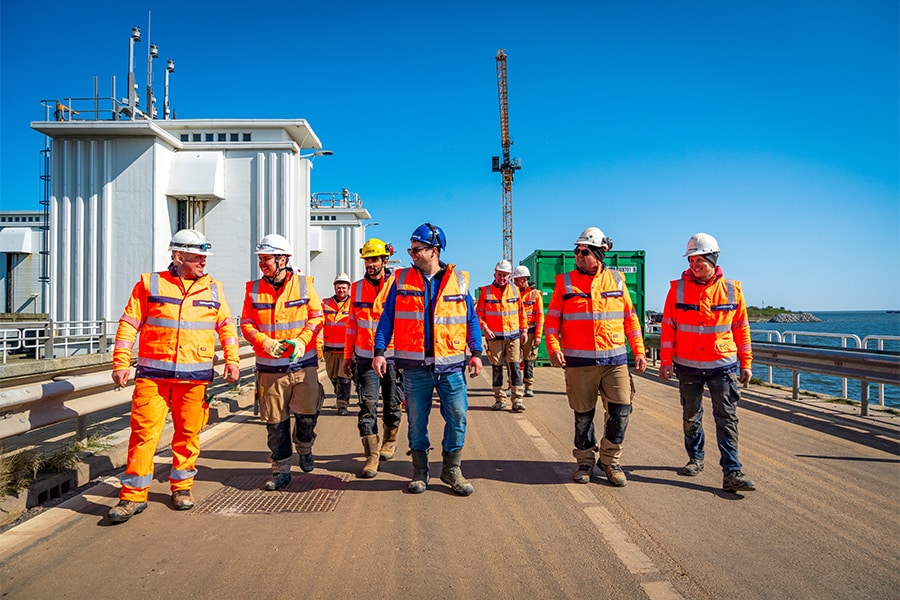
Conservation study of a bridge for which little is known
Step-by-step research
Bridge AK14 is located on the Geesterweg over the 'Slikker Die' in Akersloot and is managed by the organization BUCH (municipality of Bergen, Uitgeest, Castricum and Heiloo). The object has an in situ poured driving deck with integrated crossbeam with four supports (concrete piles), and is widened 3.25 meters on the eastern side (also in situ). Commissioned by the BUCH organization, Iv-Infra performed step-by-step (and therefore cost-efficient) research on this bridge.

Step 1: Inspection + qualitative assessment
The maintenance condition of all parts above ground level/waterline was surveyed and it was determined by limited destructive testing whether carbonation and/or (mixed) chlorides were present in the concrete. In this process, many concrete damages were observed at the underside of the deck and at the cross girders. In places where the concrete cover is no longer present, slight to moderate deterioration of the reinforcement was observed. In the cross girders, diagonal cracks were found near the repair spots above the concrete piles. The overall maintenance condition is moderate, the repairs encountered are inadequate, and cracking in the cross girders reduce the structural bearing capacity.
The carbonation front generally does not appear to extend beyond the first reinforcement layer. In contrast, the chloride content in the old deck section exceeds the limit value (0.4% m/m cement) at more than 50% of the test sites. Mixed chlorides were excluded. The geometry was also mapped during the inspection.
Based on the above, preservation of the bridge is considered a viable option. Structural safety for the next 30 years will have to be determined by a recalculation.
Step 2: Further research
For the verification calculation of the bridge deck, at least data on the structural thickness of the bridge deck, the concrete strength class, the reinforcing steel grade used and the reinforcement configuration are required. Iv-Infra determined these data in two days, using only a pontoon and scaffolding, so no traffic measures were required.
The concrete strength was determined by taking concrete cores Ø100 mm, the locations of which were determined in consultation with the structural engineer. In the process, one of the drill locations was used to locally ascertain the actual construction height. Spread across the underside of the deck, three reinforcement bars were taken out to determine the reinforcement quality applied. All test locations were recovered and the concrete cores and reinforcement bars were tested in a laboratory.
A concrete radar was used to map the reinforcement from the underside of the deck and joists. This involved examining which reinforcement is at the bottom and top of the deck and whether the reinforcement bends up near the supports, or whether additional reinforcement was added in the field. The exact applied diameter was then determined through destructive testing.
The results of non-destructive surveying of the reinforcement configuration with a concrete radar is highly dependent on conditions. In the case of bridge AK14, it managed to map the reinforcement fairly accurately, with the exception of some hard-to-reach locations, such as possibly additional support point reinforcement.

Step 3: Verification calculation
The information from step 2 is input to the verification calculation. The bridge deck was modeled in the EEM program SCIA Engineer. In the calculation, some (conservative) assumptions were made regarding the structural deck thickness of the entire deck and part of the top reinforcement.
The conclusion of this recalculation was that the capacity of the deck is insufficient to meet the specified strength requirements in accordance with current standards. Since the capacity was exceeded at some specific locations, a brief literature review of similar bridges was conducted. This suggested that more top reinforcement is present at the support locations than was conservatively assumed at this time. For this reason, it was recommended that this top reinforcement be mapped as yet. If indeed additional reinforcement is found to be present, then the bridge deck will meet the specified requirements.
Step 4: Examination of top reinforcement + revision of verification calculation
In assessing the structural deck thickness, it had been determined that a backfill layer had been applied at the top of the deck. Since the thickness of this backfill layer and the asphalt was not exactly known and a destructive verification of the reinforcement diameter was required, it was decided to clear a section of approximately 0.5 by 0.5 meters of concrete near the support point. This was done by water jetting. This method is controlled and does not affect the reinforcement. After clearing the reinforcement, the suspicion was confirmed: the additional top reinforcement is present. This information was then incorporated into the verification calculation.
The modified verification calculation shows that the structure has sufficient capacity and thus meets the specified strength requirements in accordance with current standards. The calculation is based on the original situation, which means that the damage must be permanently repaired in the short term. For the meantime, a limited axle load limitation of 45 tons total load has been advised to prevent further increase of damages.

Step 5: Recovery plan
To return the bridge to its original condition, repair work is required. Two CUR recommendations were used as guidelines in the repair plan. For repairing the concrete damages the CUR Recommendation 118:2015 and for injecting the cracks the CUR Recommendation 119:2016. Importantly, given the large percentage of affected surface on the underside of the deck, it was decided to renew the underside of the concrete deck in its entirety. For the purpose of determining the rehabilitation depth, two things should be considered: the degree of corrosion of the bar and the thickness of the concrete cover. The released rebar must be cleaned in accordance with NEN-ERN ISO 8501-1. With traffic in mind, a method has been found to carry out the work in phases, allowing the bridge to remain in use.
Step 6: Perform remedial work
Meanwhile, work on bridge AK14 has been successfully completed and the bridge has been restored to good maintenance condition.
Thanks to the stepped approach, the structural safety has been purposefully and cost-effectively demonstrated and the required maintenance identified. Through a well-considered step-by-step plan, bridges with a moderate maintenance condition can still be constructively compliant.



